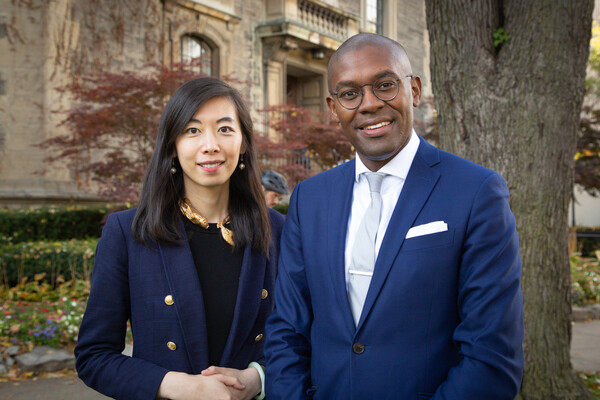Breadcrumbs
- Home
- MD/PhD Program
- News
- The Students as Teachers program prepares med students to teach the students of tomorrow
The Students as Teachers program prepares med students to teach the students of tomorrow
Sachiko Murakami
Medical education relies on physicians to take active roles as educators. The Students as Teachers (SAT) program provides medical students with formal teaching opportunities to prepare them for their future roles as leaders in medical education.
In our SAT program, one of the first in Canada, second-year medical students develop their teaching skills through monthly educational modules, practical teaching sessions and reflective exercises. Students gain experience teaching in a variety of different modes, including small groups and large lectures, and are introduced to pedagogical strategies such as identifying learner needs, and giving and receiving effective feedback.
“The program pushed me to try new techniques that pushed me outside of my comfort zone,” says Kelsey Watson, who completed the program in 2015-2016. “SAT was the first time I tried to teach a procedural skill – in my case, knot tying. It was really challenging to put into words, and demonstrate, such a tactile skill. It was valuable to me to have my first experience with this type of teaching with a supportive group of people who were also experimenting with new teaching techniques.”
“This innovative program helps students develop valuable skills now, so they are well prepared when they become educators,” explains Dr. Marcus Law, UME Director of Academic Innovation and Preclerkship Renewal, who co-directs the program, along with Dr. Karen Leslie, Director of the Centre for Faculty Development. “SAT not only prepares students for leadership in medical education, but also promotes team-based learning alongside self-directed learning – those are skills they can use today, as second-year medical students,” he says.
The transferability of skills from teaching to learning is supported by research, asserts Celine Yeung, an MD student entering her fourth year who was instrumental in SAT’s creation. “One group of researchers previously found that students who prepare with the intention of teaching outperform those who study for the purpose of test-taking,” she notes.
In her first year, Yeung noticed a gap in teaching opportunities for medical students. “We had programs like LEAD for students interested in health policy, or CREMS for those interested in research, but we did not have a stream that would promote teaching,” she explains. “I approached Dr. Law with the idea of creating a program that would foster a clinician teacher identity, and this eventually turned into the SAT program.” Together Dr. Law, Dr. Leslie and Yeung designed the SAT curriculum in partnership with students, faculty, and the Centre for Faculty Development. The program launched in the fall of 2014.
Brian Kim also recently completed the SAT program. He came to SAT with one-on-one tutoring experience, and wanted training in teaching larger groups. “I learned so many ways to be an effective teacher,” he reflects. “My favorite session was ‘Making Learning Stick’ in which we learned various techniques to make learning memorable for students, such as how to encourage active participation and the use of metaphors or analogies to explain complex concepts.”
Watson credits the program with helping her interact with a class. “I’ve always been nervous about posing questions to an audience. Through the program, I learned a number of strategies to get an audience involved, practiced these skills, and received feedback from peers. I think in the future, I will feel confident engaging a large class.”
Students interested in the SAT program can find more information from SAT student representatives via e-mail.
News


